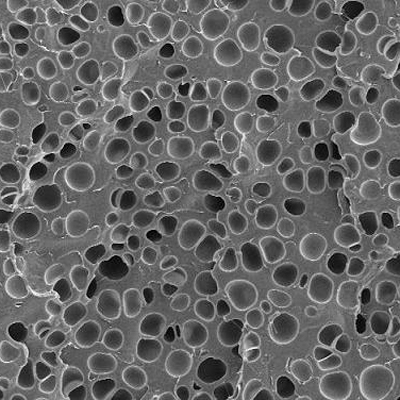Plastics in a Changing World: Trends, Challenges, and Opportunities

Introduction:
Plastics have revolutionized industries, economies, and lifestyles globally, shaping the modern world in unprecedented ways. From packaging to healthcare, construction to electronics, plastics are omnipresent. However, their ubiquitous use has led to environmental challenges, prompting a shift towards sustainable practices and innovation. In this detailed exploration, we navigate through the intricate landscape of plastics, analyzing current trends, pressing challenges, and the plethora of opportunities that await in reshaping the future of plastics.
I. Trends in Plastics:
a. Bioplastics Revolution: Bioplastics, derived from renewable sources like corn, sugarcane, or cellulose, are gaining momentum. They offer a sustainable alternative to traditional petroleum-based plastics, reducing carbon footprint and dependency on finite resources.
b. Smart Plastics and Nanotechnology: Incorporating nanotechnology, smart plastics exhibit enhanced functionalities such as self-healing, antimicrobial properties, and intelligent packaging solutions. These advancements improve product durability, safety, and environmental performance.
c. Circular Economy Initiatives: The transition towards a circular economy model emphasizes waste reduction, resource efficiency, and closed-loop systems. Plastics recycling, upcycling, and circular design strategies play a pivotal role in minimizing environmental impact and maximizing value retention.
d. Bio-based Polymers: Research and development in bio-based polymers aim to create high-performance materials with reduced environmental footprint. These polymers exhibit comparable properties to conventional plastics while being biodegradable or compostable, offering versatility across industries.
e. Advanced Manufacturing Techniques: Additive manufacturing, also known as 3D printing, is revolutionizing plastic production by enabling customized designs, reduced material wastage, and rapid prototyping capabilities. This technology streamlines production processes and fosters innovation in product development.
f. Regulatory and Market Shifts: Stringent regulations, bans on single-use plastics, and market preferences for eco-friendly alternatives are driving innovation and market demand for sustainable plastics. Companies are incentivized to adopt environmentally responsible practices and offer greener product portfolios.
| Also Read: Plastics and Energy: Role in Renewable Energy Technologies and Energy Efficiency |
II. Challenges Facing Plastics:
Plastic Pollution Crisis: The proliferation of plastic waste, particularly single-use plastics, has led to environmental degradation, ocean pollution, and harm to wildlife. Plastic debris persists in ecosystems, posing long-term threats to biodiversity and ecosystem health.
Infrastructure Gaps in Recycling: Inadequate recycling infrastructure, lack of standardized recycling processes, and low recycling rates contribute to plastic waste accumulation. Improving collection, sorting, and recycling technologies is essential for effective waste management.
Microplastics and Environmental Contamination: Microplastics, resulting from plastic degradation, contaminate water bodies, soil, and air. Their widespread presence poses risks to marine life, human health, and ecosystem integrity, necessitating comprehensive mitigation strategies.
Consumer Behavior and Education: Shifting consumer attitudes towards sustainable consumption, promoting reuse, recycling, and reducing plastic consumption require concerted efforts in education, awareness campaigns, and incentivizing eco-friendly choices.
III. Opportunities for Innovation:
Advanced Recycling Technologies: Investment in advanced recycling technologies like chemical depolymerization, pyrolysis, and solvent-based processes enables the conversion of plastic waste into valuable feedstock, reducing landfilling and resource depletion.
Biodegradable and Compostable Plastics: Research and development in biodegradable polymers, compostable packaging materials, and bio-based additives facilitate the transition towards a circular economy. These materials offer end-of-life solutions that minimize environmental impact.
Material Science Breakthroughs: Collaborative efforts in material science research yield breakthroughs in polymer chemistry, enhancing properties like durability, biodegradability, and recyclability. Innovations in bioplastics, hybrid materials, and nanocomposites drive sustainable product development.
Digital Solutions for Plastic Traceability: Blockchain technology, IoT sensors, and digital platforms enable transparent supply chains, traceability of recycled materials, and verification of sustainable practices. These digital solutions enhance trust, accountability, and market differentiation for eco-friendly plastics.
Policy Support and Industry Collaboration: Governments, regulatory agencies, and industry stakeholders collaborate to establish circular economy frameworks, incentivize sustainable practices, and enforce extended producer responsibility (EPR) measures. Policy alignment fosters innovation, investment, and market competitiveness in sustainable plastics.
IV. Innovations and Future Directions:
a. Advanced Material Engineering: Researchers and engineers are exploring novel materials and composites that offer the durability of traditional plastics while being biodegradable or recyclable. These advancements aim to bridge the gap between sustainability and performance, catering to diverse industry needs.
b. Plastic Waste Management Solutions: Innovative approaches such as pyrolysis, hydrothermal processing, and waste-to-energy technologies are being developed to address plastic waste at scale. These solutions focus on converting plastic waste into valuable products like fuels, chemicals, and raw materials.
c. Closed-Loop Supply Chains: Collaborative efforts among stakeholders, including manufacturers, recyclers, and consumers, are fostering closed-loop supply chains for plastics. This approach involves designing products for recyclability, collecting and processing waste efficiently, and reintegrating recycled materials into new products.
d. Biotechnological Solutions: Biotechnology interventions, such as enzymatic degradation of plastics, microbial bioremediation of plastic waste, and bio-based plastic synthesis, offer promising avenues for sustainable plastic management. These bio-inspired solutions mimic natural processes to tackle plastic pollution effectively.
e. Data-driven Sustainability: Harnessing big data, artificial intelligence, and machine learning, companies optimize resource use, energy efficiency, and waste reduction in plastic manufacturing and recycling processes. Data analytics inform decision-making for sustainable practices and environmental impact assessment.
f. Green Chemistry and Eco-design: Embracing principles of green chemistry and eco-design, innovators develop plastics with reduced toxicity, lower energy consumption in production, and minimal environmental footprint throughout their lifecycle. Designing for sustainability encompasses material selection, manufacturing processes, and end-of-life considerations.
g. Collaborative Research and Innovation Platforms: Cross-disciplinary collaborations, open innovation platforms, and public-private partnerships foster knowledge exchange, technology transfer, and collaborative R&D in sustainable plastics. These platforms accelerate innovation, address technical challenges, and drive market adoption of eco-friendly solutions.
h. Circular Economy Business Models: Circular economy business models, such as product-as-a-service, sharing platforms, and remanufacturing, disrupt traditional linear consumption patterns. These models emphasize resource efficiency, product longevity, and value retention, incentivizing sustainable practices across industries.
Conclusion:
The future of plastics hinges on concerted efforts towards sustainability, innovation, and responsible consumption. As we navigate the complex dynamics of a changing world, embracing a circular economy mindset, advancing technological frontiers, and fostering collaboration are key pillars in shaping a resilient and sustainable plastics ecosystem. By embracing innovation-driven solutions, policy coherence, and stakeholder engagement, we pave the way for a future where plastics contribute positively to societal needs, environmental stewardship, and economic prosperity.



